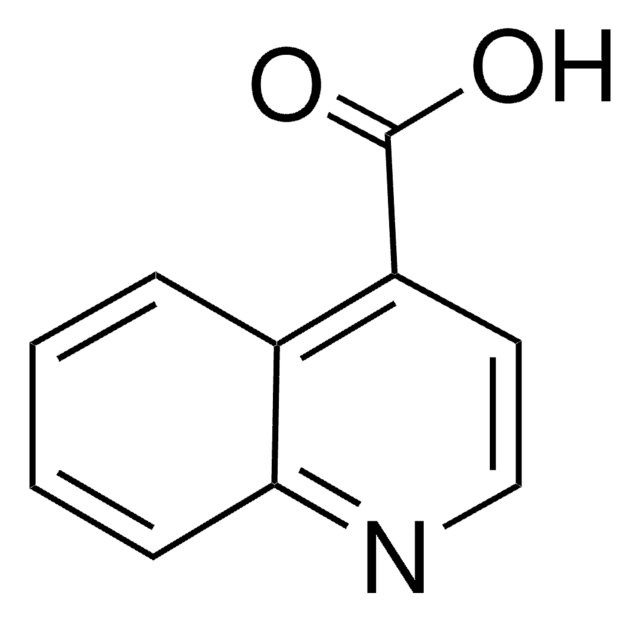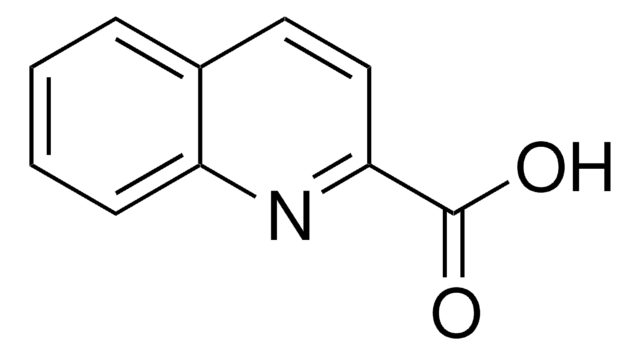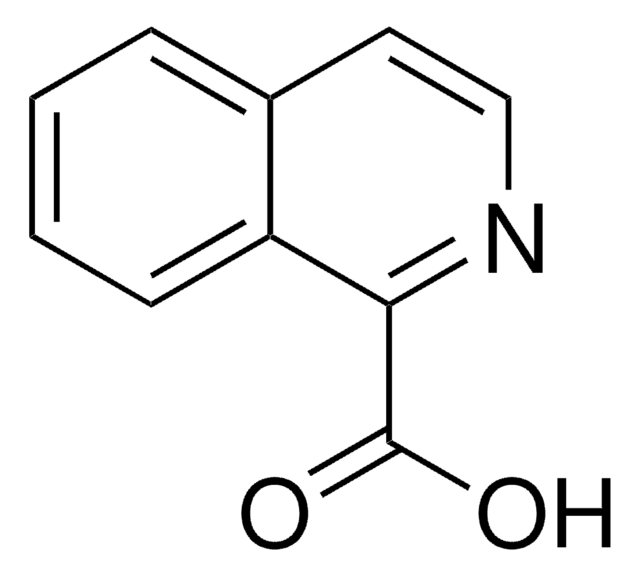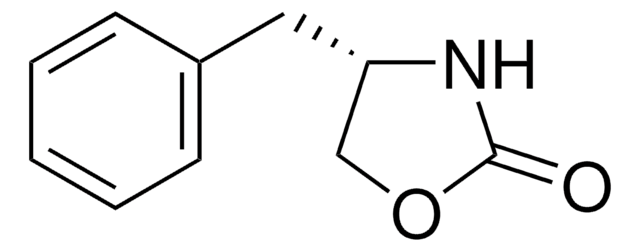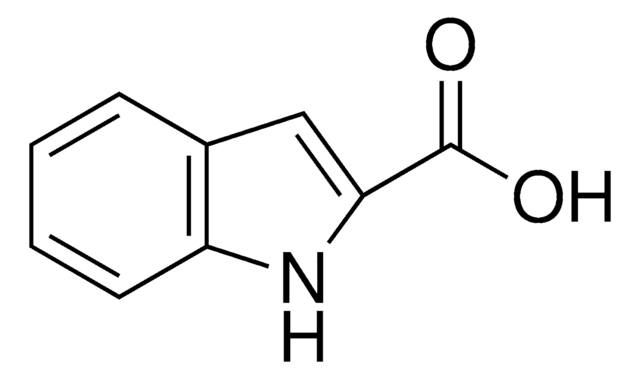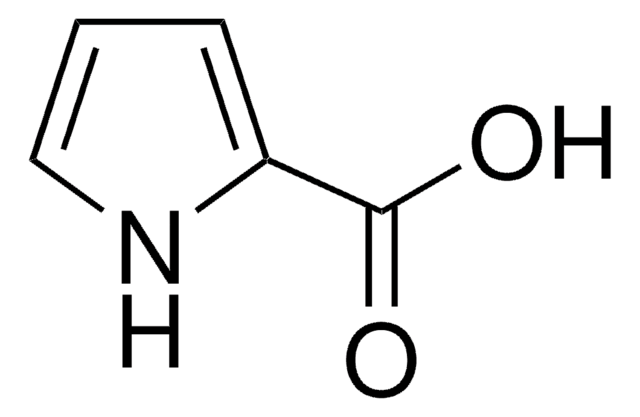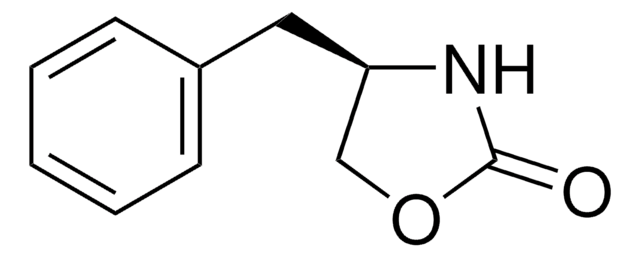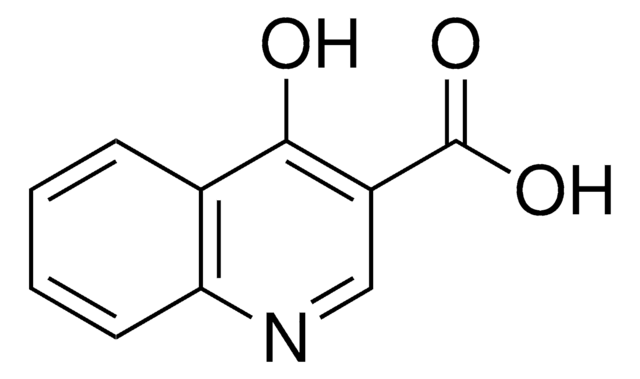All Photos(1)
About This Item
Empirical Formula (Hill Notation):
C10H7NO2
CAS Number:
Molecular Weight:
173.17
Beilstein:
126542
EC Number:
MDL number:
UNSPSC Code:
12352100
PubChem Substance ID:
NACRES:
NA.22
Recommended Products
Quality Level
Assay
98%
mp
277-280 °C (lit.)
functional group
carboxylic acid
SMILES string
OC(=O)c1cnc2ccccc2c1
InChI
1S/C10H7NO2/c12-10(13)8-5-7-3-1-2-4-9(7)11-6-8/h1-6H,(H,12,13)
InChI key
DJXNJVFEFSWHLY-UHFFFAOYSA-N
Looking for similar products? Visit Product Comparison Guide
General description
The antibacterial activity of 3-quinolinecarboxylic acid derivatives were evaluated.
Storage Class Code
11 - Combustible Solids
WGK
WGK 3
Flash Point(F)
Not applicable
Flash Point(C)
Not applicable
Personal Protective Equipment
dust mask type N95 (US), Eyeshields, Gloves
Choose from one of the most recent versions:
Already Own This Product?
Find documentation for the products that you have recently purchased in the Document Library.
M P Wentland et al.
Journal of medicinal chemistry, 27(9), 1103-1108 (1984-09-01)
A series of novel 3-quinolinecarboxylic acid derivatives have been prepared and their antibacterial activity evaluated. These derivatives are characterized by fluorine attached to the 6-position and substituted amino groups appended to the 1- and 7-positions. Structure-activity relationship studies indicate that
Antonello Mai et al.
Journal of medicinal chemistry, 49(23), 6897-6907 (2006-12-13)
Starting from a yeast phenotypic screening performed on 21 compounds, we described the identification of two small molecules (9 and 18) able to significantly reduce the S. cerevisiae cell growth, thus miming the effect of GCN5 deletion mutant. Tested on
Ximei Liang et al.
Ecotoxicology (London, England), 24(7-8), 1566-1573 (2015-04-22)
The presence of antibiotics including norfloxacin in the aquatic environment may cause adverse effects in non-target organisms. But the toxic mechanisms of fluoroquinolone to fish species are still not completely elucidated. Thus, it is essential to investigate the response of
Our team of scientists has experience in all areas of research including Life Science, Material Science, Chemical Synthesis, Chromatography, Analytical and many others.
Contact Technical Service